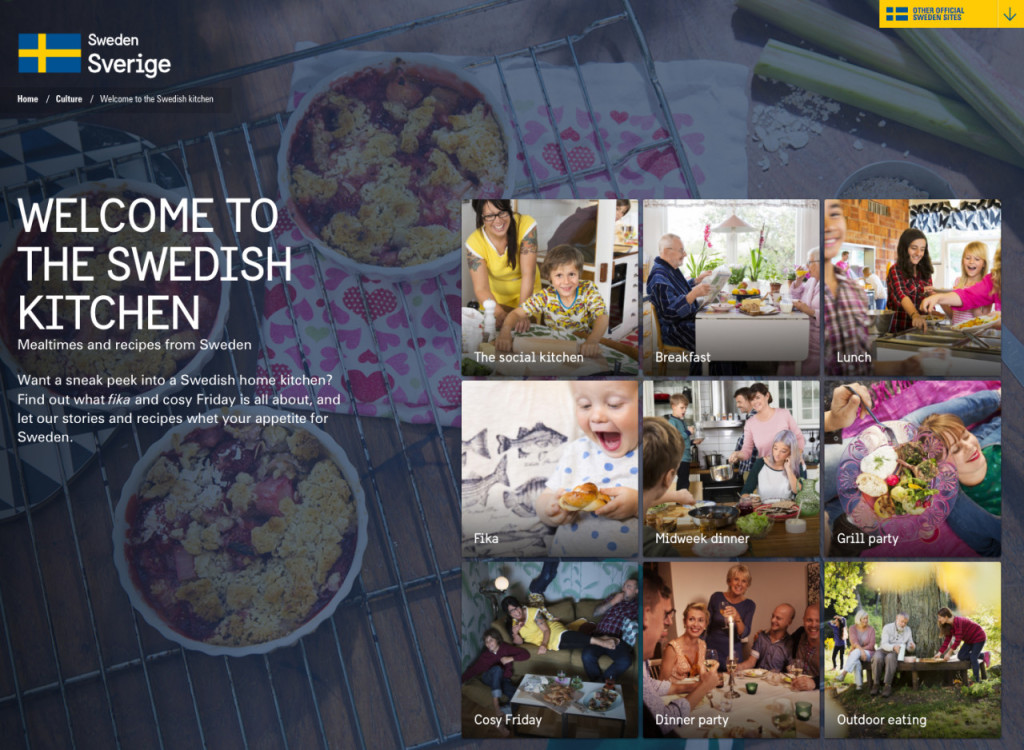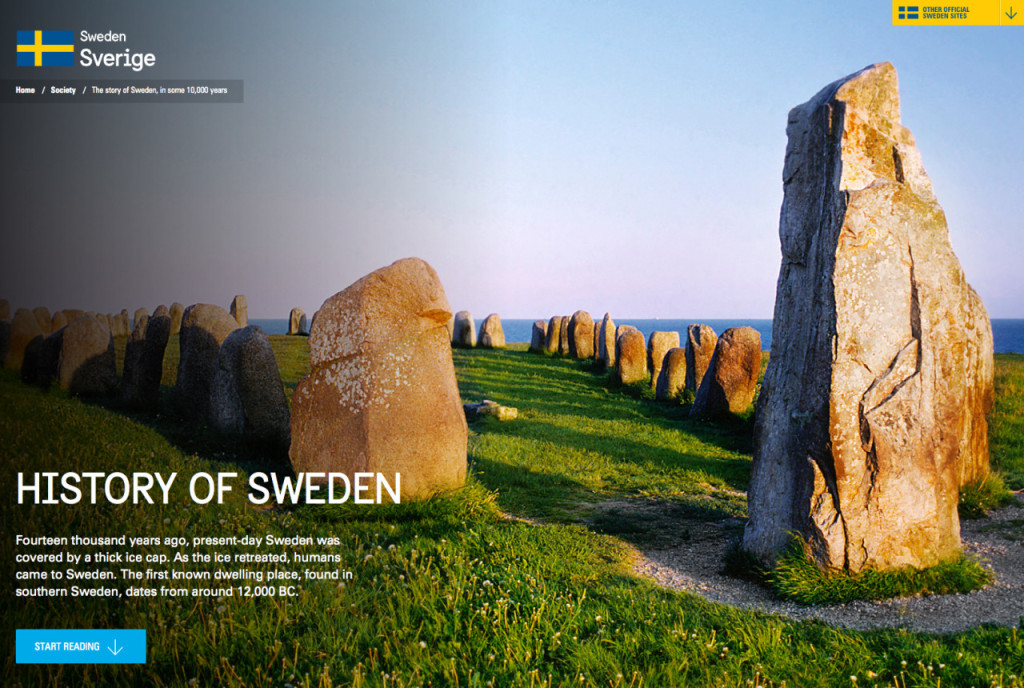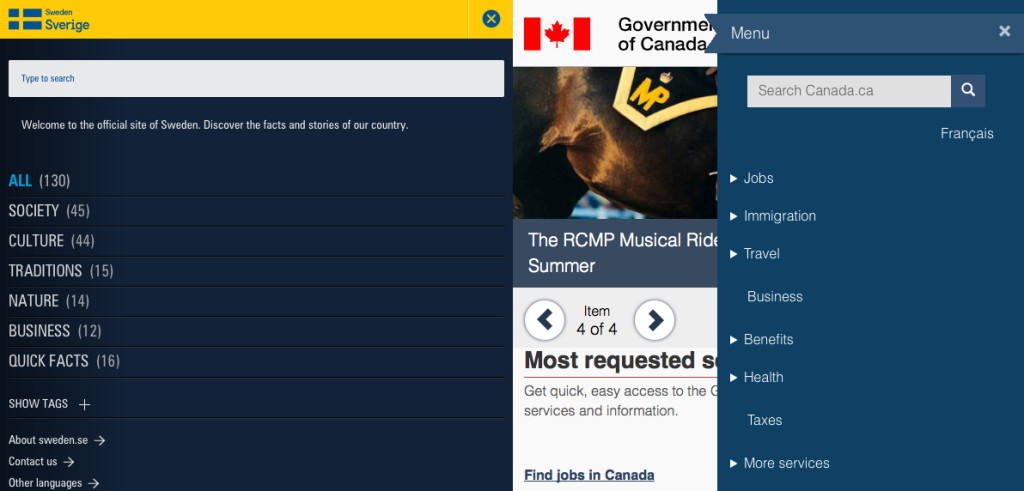
While 32 countries are busy competing in one of the world’s largest sporting events, it’s the perfect time to talk about official country websites while nobody’s looking. For those who are considering traveling abroad, a country’s official website is a logical place to start. A quick Google search would therefore lead you to expect that each country would seize the opportunity to put its best qualities at the forefront and paint an attractive and compelling picture. Yet, for many reasons, official country websites are widely overlooked.
In my recent Internet travels, I came across the official site for the country of Sweden. It not only informs prospective visitors but clearly would have an impact on its own residents. There appears to be a movement away from an official country website being strictly government focused, or strictly tourism focused. Sweden’s site is a shinning example of this trend. The site is rich with beautiful content and portrays a country that understands and promotes its culture and traditions.
“This is the official site of Sweden, offering you the facts and stories of our country.”
Sweden even uses humour in presenting some of its most important traditions such as this video explaining the Midsummer tradition:
http://vimeo.com/39345149
Naturally, I wanted to see how my own country stacked up to Sweden’s. I quickly realized that Canada could be doing a much better job.
A Story Approach

As you can see from these images, Sweden chose to tell the story of its culture, while Canada focuses on how its government serves individual Canadians. The bigger picture of our country’s history, economy, and culture are left out. In fact, Canada’s official website could benefit from taking an approach more like its Canadian Olympic Committee which feels more in line with how Sweden presents its country on a world stage.
Revelation in Navigation
In terms of site navigation, Canada’s approach is strictly from a government standpoint. A website’s menu is one of the first things that visitors interact with upon arriving at a website and the menu structure reveals what its creator considered most important.

In the case of the Swedish country site, the immediate take-away is that Sweden treats its citizens with respect and understanding. Cold and uninspiring, the Canadian site instead focuses on rules and regulations — again, not the culture and traditions that make up the nation. In fact, culture within the Swedish navigation stands on its own, unlike Canada where it gets buried into “More services.” Culture is not something that should be relegated to a catch-all menu item or be buried deep within the site.
“A nation’s culture resides in the hearts and in the soul of its people.” —Mahatma Gandhi
Sweden has taken the approach of having all of its government related information on a site with the address government.se. How great would it be if all of the nations of the world could agree to using this naming convention for their government websites? This would ensure that a country puts its best foot forward by sharing the most appealing aspects of itself on the official country site, with the more bureaucratic content moved to a government named site.
Inclusivity versus Exclusivity
While searching for official country websites, it is inevitable that one will stumble upon the official tourism sites as well. The Sweden tourism site can be found at visitsweden.com and the Canadian tourism site at canada.travel. Both tourism sites do a great job of providing content for tourists, but they lack the heart and soul that is offered on the official sweden.se site. The Canadian tourism site makes you choose your home country before entering the website (and excludes many countries from the list). The Swedish travel site is a little more appealing, but feels very disconnected from the official site. Both sites together give a very exclusive feel which is contrary to what it should be doing. This begs the question “Why can’t tourism just be a component of the official country website?” It would surely make people feel more connected to the country—citizens and tourists alike.
We Are the Curators
Governments play a role in telling the story of their respective countries, but they should not be the only ones telling the story. Sweden decided to tackle this face-on by its initiative entitled the Curators of Sweden, in which a new Swedish citizen is granted access to the @sweden twitter handle every week. This has been in place since 2011 and continues to this day as an example of a twitter account that is a true representation of a country and a democracy.
http://vimeo.com/35899622
The same cannot be said for Canada, as there is no unified Canadian voice from its citizens. Instead, Twitter is used by Canada in the same voice and style as its official website, with a vast array of government department accounts for Canadians to follow. The simple act of assigning the @sweden Twitter account to individuals demonstrates a tremendous level of respect and trust towards its citizens. It gives a genuine human voice and helps people learn more about the country through the people who actually live there.
Genuine, simple and organized
Online and offline, people crave genuine communication and engagement. We tire of the myth-making culture that advertising has created and instead crave ideas and content with real substance. My hope is that we use Sweden as a model for how to do it right. While still important, government bureaucracy websites should live as stand-alone sites (e.g. government.se, government.ca, government.us), creating room for the national narratives of culture and history to be presented separately at dedicated sites (e.g. sweden.se, canada.ca, usa.us).
“This City is what it is because our citizens are what they are.”
—Plato

